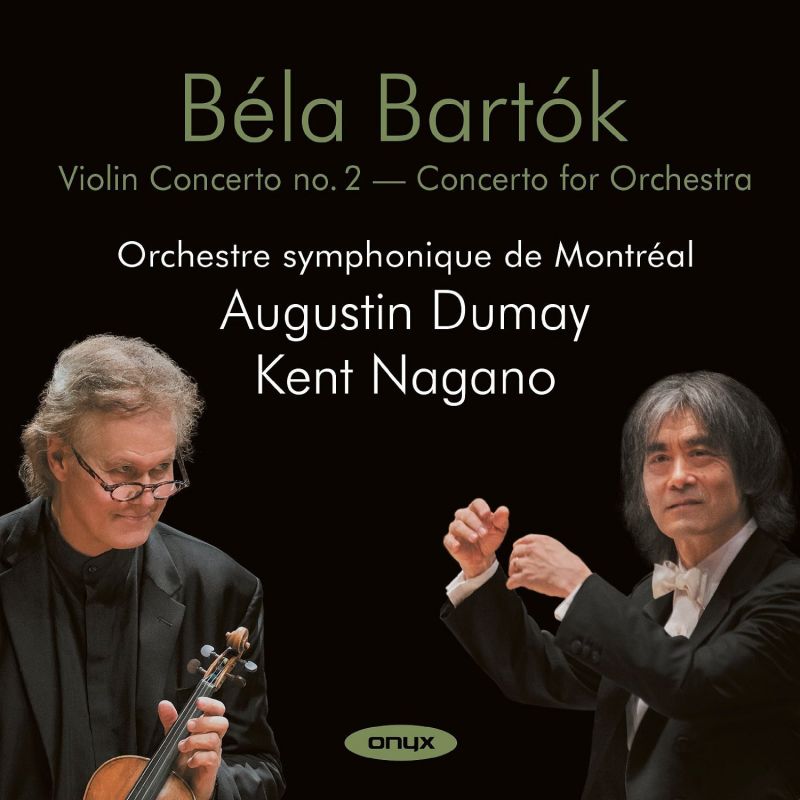BARTÓK Violin Concerto No 2. Concerto for Orchestra
View record and artist detailsRecord and Artist Details
Composer or Director: Béla Bartók
Genre:
Orchestral
Label: Onyx
Magazine Review Date: 06/2016
Media Format: CD or Download
Media Runtime: 81
Mastering:
DDD
Catalogue Number: ONYX4138

Tracks:
| Composition | Artist Credit |
|---|---|
| Concerto for Violin and Orchestra No. 2 |
Béla Bartók, Composer
Augustin Dumay, Violin Béla Bartók, Composer Kent Nagano, Conductor Montreal Symphony Orchestra |
| Concerto for Orchestra |
Béla Bartók, Composer
Béla Bartók, Composer Kent Nagano, Conductor Montreal Symphony Orchestra |
Author: Rob Cowan
At the start of the Andante tranquillo second movement both soloist and conductor raise a gentle curtain on a world of fairy-tale, Dumay, a superb player, suggesting infinite sadness, Nagano’s strings suggesting a tender embrace. At bar 42 (4'24" here) some violinists lengthen the crotchet to avoid a feeling of abruptness (Menuhin, Mullova, Gil Shaham etc). Zoltán Székely didn’t at the 1938 premiere (Decca); neither did André Gertler (Supraphon), and nor does Dumay here. At first I wondered whether it was an editing glitch but I’m pretty sure that it isn’t. The finale goes with a real swing – the opening especially – although, as in the first movement, there’s plenty of room for spacious reflection (eg from 2'12").
The Concerto for Orchestra again benefits from Nagano’s penchant for rich textures – richer in fact than on Dutoit’s more transparent recording of the work with same orchestra for Decca, although not everything is crystal clear. Try 4'14" into the first movement, where the woodwinds are partially obscured, then sample, by way of comparison, either Dutoit himself or, even better, Iván Fischer (also Decca) in the same passage. Nagano’s ‘Game of Pairs’ second movement, like Dutoit’s, is rather heavy-handed (switch to Fischer or Reiner on RCA for a livelier approach). In the ‘Elegia’ the viola passage at 3'49" lacks the Hungarian-style edge achieved by Boulez in Chicago (DG), though the Intermezzo and finale lack neither character nor energy.
Summing up, a worthy and often interesting supplement to my current top recommendations: Fischer or Kocsis in the Concerto for Orchestra and Kelemen with Kocsis in the Second Violin Concerto. I’ll certainly want to hang on to it.
Discover the world's largest classical music catalogue with Presto Music.

Gramophone Digital Club
- Digital Edition
- Digital Archive
- Reviews Database
- Full website access
From £8.75 / month
Subscribe
Gramophone Full Club
- Print Edition
- Digital Edition
- Digital Archive
- Reviews Database
- Full website access
From £11.00 / month
Subscribe
If you are a library, university or other organisation that would be interested in an institutional subscription to Gramophone please click here for further information.





